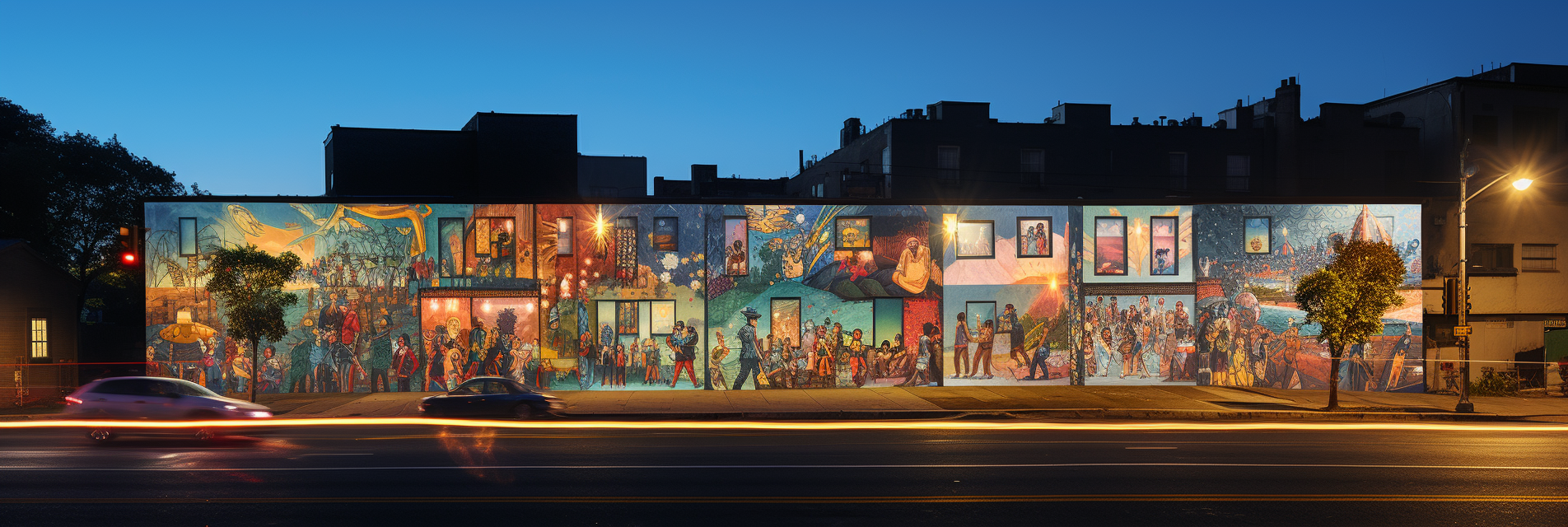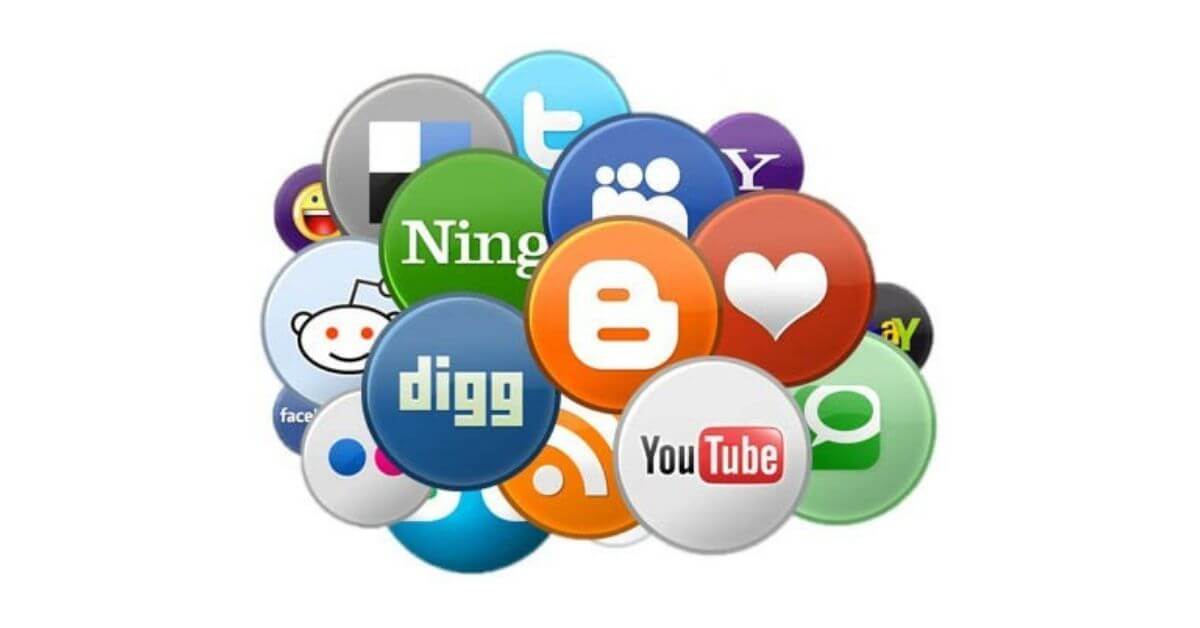
Published: Nov 30, 2024
How New Platforms Are Shaking Up Content Engagement in 2025
How New Platforms Are Shaking Up Content Engagement in 2025
I’ve seen more social media platforms come and go than I care to admit. But let me tell you, the current crop of newbies? They’re not just flashing in the pan - they’re setting the whole kitchen on fire! As someone who’s been in the content trenches for years, I’m both excited and a little terrified by how these new platforms are changing the game. So, let’s dive into this brave new world together, shall we?
TLDR: How are new platforms changing the way we create and consume content?
1️⃣ What types of content are thriving on new platforms?
Short-form video and interactive content are dominating new platforms. Think 15-second challenges, AR filters, and live-streaming games. These formats encourage active participation and instant gratification, keeping users hooked and engaged.
2️⃣ How are new platforms affecting user behavior?
New platforms are fostering a more immersive and interactive experience. Users are no longer passive consumers but active participants in content creation. This shift is leading to higher engagement rates and longer time spent on these platforms.
3️⃣ What strategies should brands adopt to succeed on new platforms?
Brands need to prioritize authenticity and user-generated content. Collaborating with micro-influencers, creating platform-specific content, and encouraging user participation through challenges or contests are key strategies for success on these new platforms.
Table of Contents
- The Rise of New Platforms
- The Impact on Content Creation
- Engagement Metrics: Then vs Now
- Challenges and Opportunities for Brands
- How New Platforms are Changing Content Consumption
- Wrapping It Up: Key Takeaways
- The Future of Content Engagement
The Rise of New Platforms
The social media landscape is shifting faster than ever. New platforms are popping up left and right, and some are really shaking things up. Let’s take a closer look at what’s been happening.
TikTok
The Short-Form Video Giant
TikTok’s growth has been nothing short of explosive. In just a few years, it’s become a major player in the social media world.
- User Base: Over 1 billion monthly active users as of 2023
- Growth Rate: 45% year-over-year increase in users from 2022 to 2023
- Key Features:
- 15-60 second video format
- AI-powered “For You” page
- Easy-to-use video editing tools
BeReal
The Authenticity Platform
BeReal took the world by storm with its unique approach to social sharing.
- Concept: Users are prompted once a day to share a real-time photo
- Growth: From 10,000 daily active users in early 2022 to over 10 million by the end of the year
- User Engagement: 40% of users post daily, showing high stickiness
Clubhouse
The Audio Revolution
While its initial hype has cooled, Clubhouse paved the way for audio-based social networking.
- Peak Growth: 10 million weekly active users in February 2021
- Impact: Inspired audio features on other platforms like Twitter Spaces and Facebook Live Audio Rooms
Key Differentiators of New Platforms
-
- AI-powered content recommendations are becoming the norm
- TikTok’s algorithm is a prime example, with users spending an average of 95 minutes per day on the app
Ephemeral Content
- Stories and disappearing content continue to be popular
- 500 million Instagram users interact with Stories daily
Adoption Rates Compared to Established Platforms
New platforms are growing at unprecedented rates compared to their predecessors:
| Platform | Time to Reach 100 Million Users |
|---|---|
| 4.5 years | |
| 2.5 years | |
| TikTok | 9 months |
This rapid growth is reshaping how we think about content creation and engagement. It’s not just about having a presence anymore – it’s about adapting quickly to new formats and audience expectations.
As these platforms continue to evolve, they’re not just changing how we share content, but how we interact with each other online. The rise of these new platforms is more than just a trend – it’s a fundamental shift in the social media landscape that’s here to stay.
The Impact on Content Creation
The surge of new platforms has turned content creation on its head. Gone are the days of meticulously planned photoshoots and long-form videos. Now, it’s all about spontaneity, authenticity, and rapid-fire creativity. Let’s break down how these changes are reshaping the content landscape.
Short-Form Video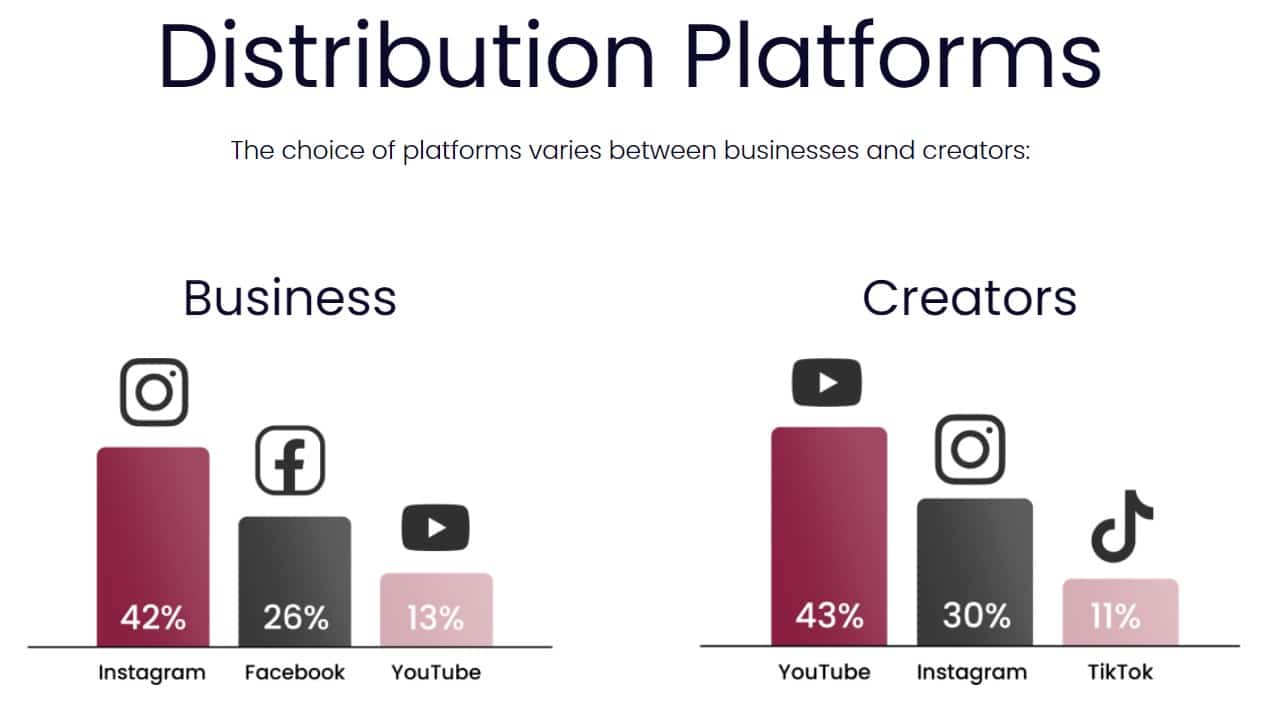
The New King of Content
Short-form video has exploded in popularity, thanks largely to TikTok. This format is now dominating across platforms:
- Average video length: 15-60 seconds
- Engagement rates: Up to 3x higher than traditional posts
- Content types: Challenges, tutorials, lip-syncs, dance trends
Creators are learning to pack a punch in just a few seconds. It’s not easy, but when done right, the payoff can be huge.
User-Generated Content (UGC)
Authenticity Reigns Supreme
Platforms like BeReal have put UGC front and center:
- 76% of consumers trust content shared by “average” people over brands
- UGC-based ads get 4x higher click-through rates
Brands are catching on, with many running UGC campaigns to boost engagement and authenticity.
Live Streaming
Real-Time Engagement
Live streaming has become a cornerstone of content strategies:
- 80% of consumers prefer live video from a brand to blog posts
- Platforms like Twitch see over 30 million daily active users
Creators are using live streams for Q&As, product launches, and behind-the-scenes content, fostering real-time connections with their audience.
Augmented Reality (AR) Content
Blending Digital and Physical Worlds
AR filters and effects are no longer just fun gimmicks:
- Over 1 billion people use AR features across social platforms
- Snapchat reports that 75% of its users engage with AR daily
Creators are developing custom AR filters, turning followers into walking billboards for their brand.
Skills and Tools for the New Era
To thrive in this new landscape, creators need to level up their skills:
-
- Creators need to stay on top of rapidly changing trends
- Tools like TrendTok help identify viral content early
-
- Engaging with followers is more important than ever
- Creators are using tools like Sprout Social to manage interactions across platforms
Tips for Businesses Adapting to New Platforms
Embrace Imperfection
- Polished content often underperforms compared to authentic, raw material
- Example:Duolingo’s TikTok account gained millions of followers with its quirky, unpolished content
Leverage Employee Advocacy
- Turn employees into content creators
- LinkedIn reports that employee shares have 2x higher engagement than company shares
Experiment with Formats
- Don’t put all your eggs in one basket
- Try a mix of short-form video, live streams, and interactive content
Collaborate with Creators
- Partner with influencers who understand the platform
- Example:Chipotle partnered with TikTok creators for its #GuacDance challenge, generating 250,000 video submissions
The content creation landscape is evolving at breakneck speed. It’s challenging, sure, but it’s also incredibly exciting. The key is to stay flexible, keep experimenting, and never stop learning. Who knows? Your next post could be the one that goes viral and catapults your brand into the spotlight.
Engagement Metrics: Then vs Now
The game’s changed, folks. Remember when we used to obsess over likes and followers? Those days are long gone. Let’s dive into how we measure success on social media these days.
Traditional Metrics: The Old Guard
Back in the day, we lived and died by these numbers:
-
- The ultimate vanity metric
- Easy to game with bots and fake accounts
-
- Instagram even experimented with hiding likes in 2019
- Still important, but not the be-all and end-all
-
- More valuable than likes, but quality varied wildly
- Often filled with spam or shallow responses
-
- The holy grail of engagement
- Indicated content resonance, but didn’t tell the whole story
New-Age Metrics: The Rising Stars
Now? We’re talking about metrics that actually mean something:
-
- YouTube’s algorithm favors total watch time over views
- TikTok’s average session length is 10.85 minutes per user
-
- Percentage of users who watch a video all the way through
- Instagram Reels with higher completion rates get more organic reach
-
- Users saving content for later indicates high value
- Instagram’s algorithm prioritizes saved content in feeds
-
- Interactions with story stickers (polls, quizzes, etc.)
- Shows active engagement beyond passive viewing
-
- Crucial for platforms like TikTok where audio is key
- 88% of TikTok users say sound is essential to the experience
Why These New Metrics Matter
It’s all about quality over quantity now. Here’s why:
-
- Platforms prioritize content that keeps users engaged longer
- Example: TikTok’s “For You” page heavily weights watch time and completion rate
-
- Brands want to know their content is actually being consumed
- Metrics like watch time and completion rate are more valuable than simple view counts
-
- New metrics better reflect genuine interest and engagement
- Saves and sticker taps show active participation, not just passive scrolling
Real-World Impact: The Numbers Don’t Lie
Let’s look at some data that shows why these new metrics are game-changers:
TikTok Success Story
- A brand saw 3x more engagement when focusing on completion rate over likes
- They adjusted video length from 60 seconds to 15 seconds, increasing average completion rate from 25% to 75%
Instagram Reels Revelation
- Content with high save rates (>5%) saw 70% more reach than those without
- Brands focusing on “saveable” content (tutorials, how-tos) saw follower growth increase by 34%
YouTube Watch Time Wonder
- Channels optimizing for watch time saw 50% more subscribers than those focusing on view count
- Average revenue per user increased by 35% when watch time was prioritized
Adapting Your Strategy
So, how do we roll with these changes? Here are some tips:
Create “Loop-Worthy” Content
- Make videos that viewers want to watch multiple times
- Use cliffhangers or surprising endings to encourage replays
Optimize for Sound-On
- Invest in good audio quality
- Use trending sounds or original music to boost engagement
Encourage Active Participation
- Use interactive elements like polls, quizzes, and challenges
- Ask viewers to save your content for later reference
Focus on Value-Packed Short-Form
- Condense your message into bite-sized, information-rich snippets
- Front-load your content with hooks to boost completion rates
The shift in engagement metrics reflects a broader change in how we consume and interact with content. It’s not just about eyeballs anymore; it’s about attention, retention, and action. By understanding and adapting to these new metrics, we can create content that not only reaches our audience but truly resonates with them.
Remember, at the end of the day, it’s all about creating value for your audience. These new metrics are just tools to help us measure that value more accurately. So, keep experimenting, keep analyzing, and most importantly, keep creating content that matters.
Challenges and Opportunities for Brands
The rise of new platforms has shaken up the content game, leaving brands scrambling to adapt. Let’s dive into the hurdles and hidden gems this new landscape offers.
Challenges: The Uphill Battle
Platform Fragmentation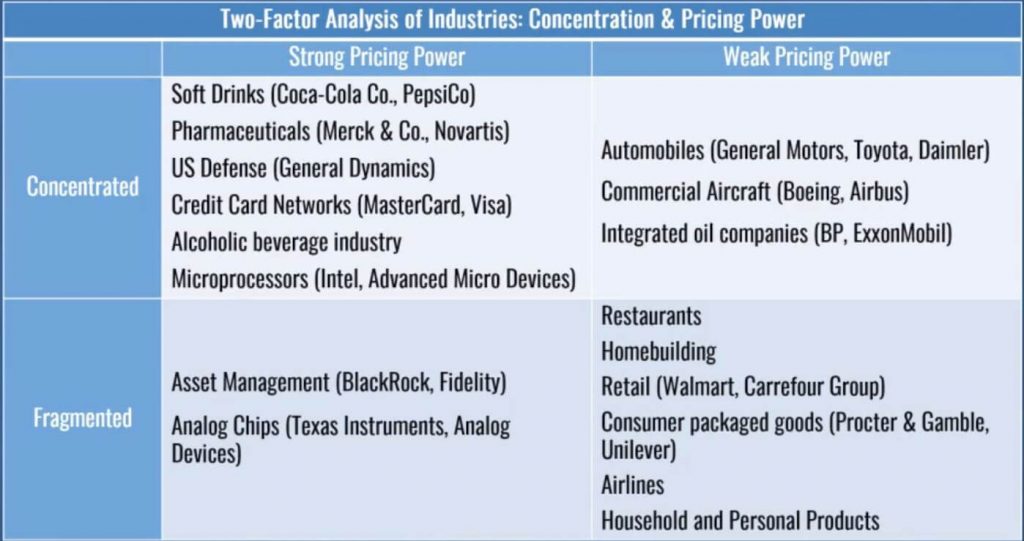
- Brands now juggle multiple platforms, each with unique content requirements
- Example: A video optimized for TikTok might flop on Instagram Reels
Content Velocity
- The demand for fresh content is relentless
- Brands struggle to maintain quality while pumping out daily posts
Algorithm Changes
- Platforms constantly tweak their algorithms, affecting content reach
- Facebook’s 2018 algorithm change decimated organic reach for many brands
Authenticity vs. Brand Image
- New platforms favor raw, unpolished content
- Traditional brands find it hard to loosen up without compromising their image
Opportunities: The Silver Linings
Micro-Influencer Collaborations
- Smaller, niche influencers often have higher engagement rates
- Glossier built its brand almost entirely through micro-influencer partnerships
User-Generated Content (UGC)
- Encourages customer participation and builds community
- GoPro regularly features user-submitted content, driving engagement and sales
Real-Time Marketing
- Quick reactions to trending topics can go viral
- Oreo’s “You can still dunk in the dark” tweet during the 2013 Super Bowl blackout is a classic example
AR and VR Integration
- Immersive experiences boost engagement and brand recall
- IKEA Place app lets users virtually place furniture in their homes
Case Studies: Brands Nailing the New Landscape
Duolingo on TikTok
- Embraced a quirky, meme-centric approach
- Results: 4.6 million followers and 72.9 million likes
Chipotle #GuacDance Challenge
- Leveraged user-generated content on TikTok
- Outcome: 250,000 video submissions and record-breaking guacamole sales
Spotify Wrapped
- Annual personalized user data campaign
- Impact: 60 million shares in 2020, driving massive brand awareness
Strategies for Success
Embrace Platform-Native Content
- Create content specifically for each platform
- Example:Netflix tailors trailers for different social media platforms
Invest in Content Creation Tools
- Use tools like Canva or Adobe Spark for quick, high-quality content
Leverage Employee Advocacy
- Encourage employees to share brand content
- Dell saw a 67% increase in engagement through employee advocacy
Focus on Community Building
- Create spaces for customers to interact
- Sephora’s Beauty Insider community has over 25 million members
Experiment with Emerging Formats
- Try new features like Instagram Reels or Twitter Spaces
- Early adopters often see higher engagement rates
The new content landscape is a double-edged sword. It’s challenging, sure, but it also offers unprecedented opportunities for brands to connect with their audience in authentic, meaningful ways. The key is to stay agile, embrace experimentation, and always keep your audience at the heart of your strategy. Who knows? Your next campaign could be the one that breaks the internet.
How New Platforms are Changing Content Consumption
The way we consume content is evolving faster than ever, thanks to new platforms shaking up the digital landscape. Let’s dive into how these changes are reshaping our online experiences.
Short-Form Video Dominance
Short-form video has exploded in popularity, fundamentally changing how we consume content:
- Attention Spans: The average attention span has dropped to just 8 seconds, down from 12 seconds in 2000
- Content Length: Videos under 60 seconds get 68% more engagement than longer ones
- Platform Impact: TikTok users spend an average of 95 minutes per day on the app
This shift has led to a “snackable” content culture, where quick, engaging bits of information reign supreme.
Algorithmic Content Discovery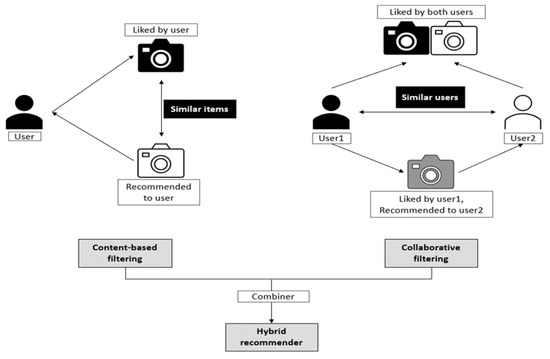
New platforms are revolutionizing how we find content:
- AI-Powered Recommendations: TikTok’s “For You” page uses advanced AI to serve personalized content
- Engagement Metrics: Platforms prioritize content based on watch time, completion rates, and interactions
- User Behavior: 70% of YouTube watch time comes from algorithmic recommendations
This shift means users are increasingly consuming content they didn’t explicitly search for, changing the discovery landscape.
Interactive Content
Passive consumption is giving way to interactive experiences:
- Live Streaming: Twitch saw a 45% increase in hours watched from 2019 to 2020
- AR Filters: Over 1 billion people use AR features across social platforms
- Polls and Quizzes: Instagram Stories with polls see a 20% higher completion rate
Users now expect to participate in content, not just watch it.
Multi-Platform Consumption
Content is no longer siloed to a single platform:
- Cross-Posting: 78% of marketers share content across multiple platforms
- Platform Hopping: Users switch between an average of 3 social media platforms daily
- Content Adaptation: Successful creators tailor content for each platform’s unique features
This trend requires content to be adaptable and platform-agnostic.
Ephemeral Content
Temporary content is changing how we value and consume media:
- Stories Format: 500 million Instagram users interact with Stories daily
- FOMO Factor: Ephemeral content creates urgency, driving higher engagement rates
- Authenticity: Temporary posts are often perceived as more genuine and spontaneous
This shift encourages more frequent, less polished content creation and consumption.
Vertical Video Format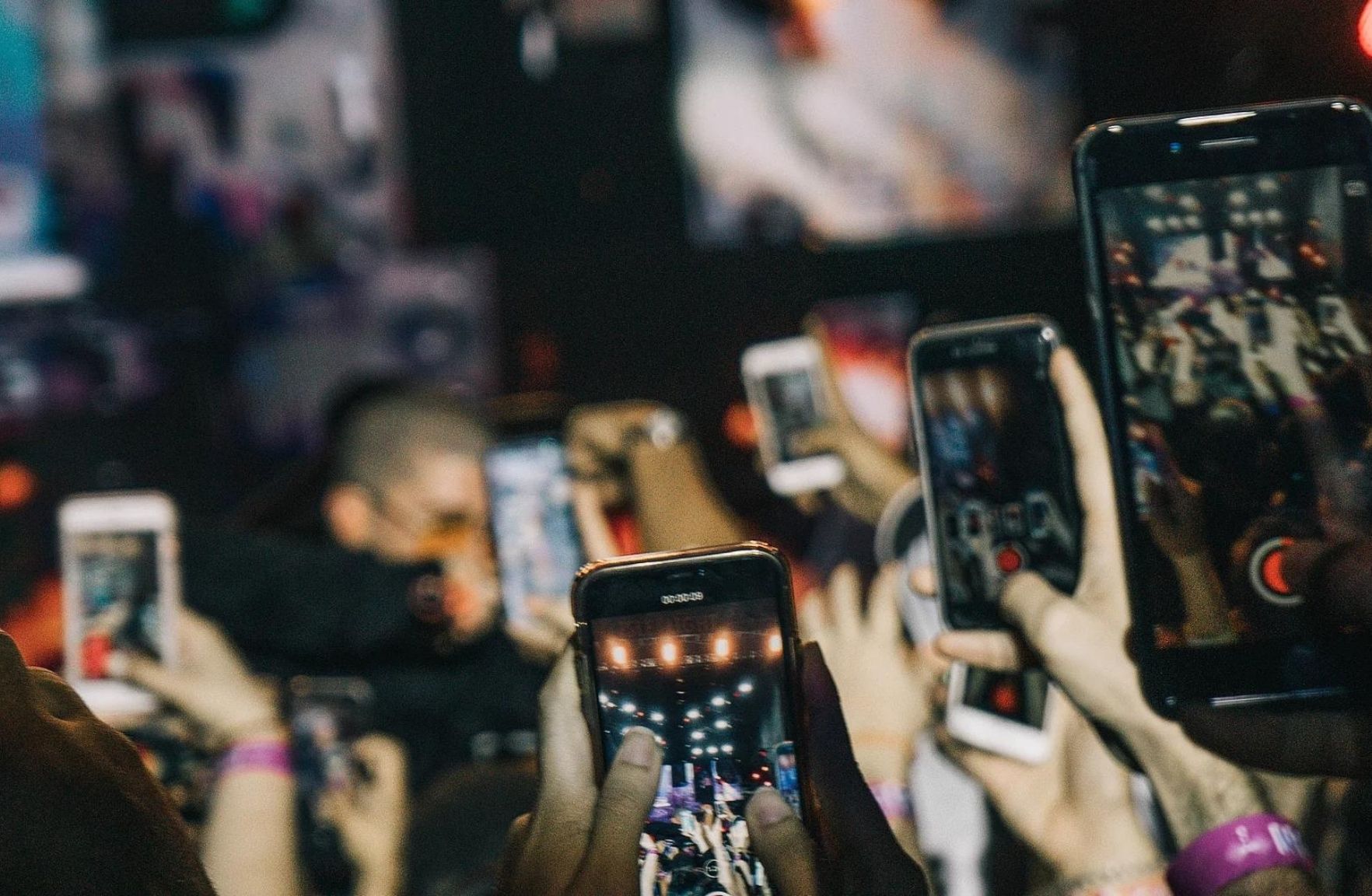
The rise of mobile-first platforms has normalized vertical video:
- User Preference: 75% of worldwide video viewing is done on mobile devices
- Engagement Rates: Vertical videos have a 90% higher completion rate than horizontal ones
- Platform Adoption: Even traditional platforms like YouTube now support vertical video
This change has significant implications for how content is created, consumed, and optimized.
Audio-First Content
Podcasts and audio-based social platforms are on the rise:
- Growth: Podcast listenership grew by 37% between 2020 and 2021
- Multitasking: 59% of podcast listeners are doing other activities while listening
- Platform Innovation: Clubhouse’s success sparked audio features on other platforms
This trend is creating new opportunities for content consumption during traditionally “dead” time.
Adapting to the New Content Landscape
For creators and brands, these changes present both challenges and opportunities:
Embrace Platform Diversity: Don’t put all your eggs in one basket. Experiment with content across multiple platforms.
Prioritize Mobile Optimization: With mobile dominating content consumption, ensure your content looks great on small screens.
Invest in Interactive Elements: Look for ways to make your content more engaging and participatory.
Focus on Authenticity: In the age of polished influencer content, genuine, behind-the-scenes glimpses can stand out.
Stay Agile: Be ready to pivot your strategy as new platforms and features emerge.
The content consumption landscape is more dynamic than ever. By understanding these trends and adapting quickly, creators and brands can stay ahead of the curve and connect with audiences in meaningful ways. Remember, the key is to create content that not only catches the eye but also resonates with the heart.
Wrapping It Up: Key Takeaways
Let’s break down what we’ve learned about the new content engagement landscape. It’s a wild ride, but with the right approach, brands can thrive in this ever-changing digital world.
Adapt or Get Left Behind
The pace of change in social media is relentless. Here’s what you need to keep in mind:
- Platform Diversity: Don’t put all your eggs in one basket. Spread your content across multiple platforms to maximize reach.
- Content Flexibility: Create content that can be easily adapted for different platforms. What works on TikTok might need tweaking for Instagram Reels.
Embrace the Short-Form Revolution
Short-form video is king, and it’s not going anywhere:
- Bite-sized Content: Focus on creating engaging content that can be consumed in 60 seconds or less.
- Hook ‘Em Quick: You’ve got about 3 seconds to grab attention. Make them count!
Authenticity Trumps Polish
Today’s audiences crave genuine connections:
- Behind-the-Scenes Content: Show the human side of your brand. Imperfections can be endearing.
- User-Generated Content: Encourage and showcase content created by your customers. It builds trust and community.
Engagement is More Than Likes
New metrics are changing how we measure success:
- Watch Time: Focus on creating content that keeps viewers engaged till the end.
- Saves and Shares: These actions indicate high-value content that resonates with your audience.
Interactive Content is the Future
Passive consumption is out. Interaction is in:
- Live Streams: Use platforms like Twitch or Instagram Live to connect with your audience in real-time.
- AR Filters: Create branded filters for platforms like Snapchat or Instagram to boost engagement and brand awareness.
Harness the Power of AI
AI is revolutionizing content discovery and creation:
- Algorithm-Friendly Content: Understand and optimize for each platform’s algorithm. For example, TikTok favors content with high watch time and completion rates.
- AI-Powered Tools: Use tools like Canva’s Magic Write or Jasper to streamline content creation.
Actionable Tips for Upping Your Content Game
Content Audit: Review your existing content. What’s performing well? What’s falling flat? Use these insights to guide your strategy.
Experiment Fearlessly: Try new formats and features. Remember, Instagram Reels often get more reach than standard posts.
Collaborate: Partner with influencers or other brands for fresh perspectives and expanded reach.
Stay Informed: Follow industry blogs like Social Media Examiner or Hootsuite’s Blog to stay on top of platform updates and trends.
Engage, Engage, Engage: Respond to comments, join conversations, and build a community around your brand.
The future of content engagement is dynamic, interactive, and authentic. It’s about creating experiences, not just posts. As we look ahead, one thing’s clear: the brands that will thrive are those that stay agile, embrace new technologies, and never lose sight of their audience’s needs and preferences.
Remember, at the end of the day, it’s not about chasing trends—it’s about connecting with people. So, are you ready to shake up your content strategy and ride the wave of this new era? The digital stage is set, and your audience is waiting. What will your next move be?
The Future of Content Engagement
The content engagement landscape is evolving at breakneck speed, and the future promises even more exciting changes. Let’s dive into what’s on the horizon and how brands can stay ahead of the curve.
Artificial Intelligence (AI) and Personalization
AI is set to revolutionize content engagement:
- Hyper-Personalized Content: AI algorithms will create tailored content for individual users based on their preferences and behaviors.
- Predictive Analytics: Brands will use AI to predict trending topics and create content ahead of the curve.
- AI-Generated Content: Tools like GPT-4 will assist in content creation, allowing for faster production of high-quality, relevant material.
Virtual and Augmented Reality (VR/AR)
Immersive experiences will become mainstream:
- Virtual Brand Experiences: Companies like Nike are already creating virtual worlds where customers can interact with products.
- AR Shopping:IKEA’s Place app lets users visualize furniture in their homes before purchasing.
- Interactive Storytelling: Brands will use VR to create immersive narratives that deeply engage audiences.
Voice-Activated Content
As smart speakers and voice assistants grow, so will voice-activated content:
- Voice Search Optimization: Content will need to be optimized for voice search queries.
- Interactive Audio Ads: Platforms like Spotify are experimenting with voice-activated ads.
- Voice-First Social Platforms: We may see the rise of audio-based social networks beyond Clubhouse.
Blockchain and Decentralized Platforms
Blockchain technology will impact content creation and distribution:
- Creator Ownership: Platforms like Mirror use blockchain to give creators more control over their content.
- Tokenized Engagement: Brands might offer cryptocurrency rewards for engagement, similar to Brave browser’s Basic Attention Token.
- Decentralized Social Media: Platforms like Mastodon could gain traction, changing how content is shared and monetized.
Interactive and Shoppable Content
Content and commerce will become increasingly intertwined:
- Live Shopping Streams: Already popular in China, platforms like Instagram Live Shopping are making it mainstream globally.
- Shoppable Video: TikTok’s partnership with Shopify allows users to shop directly from videos.
- Interactive Product Demos: Brands will create engaging, interactive content that seamlessly leads to purchases.
5G and Edge Computing
Faster networks will enable new forms of content:
- High-Quality Streaming: 5G will make 4K and 8K video streaming more accessible, raising the bar for video content.
- Real-Time Interactivity: Lower latency will enable more real-time interactive experiences, like live AR filters during video calls.
- IoT Integration: Content might be delivered through smart devices, from refrigerators to car dashboards.
Preparing for the Future of Content Engagement
Invest in AI and Data Analytics: Tools like IBM Watson can help analyze user data and create personalized content strategies.
Experiment with Immersive Technologies: Start small with AR filters or 360-degree videos to get familiar with immersive content creation.
Optimize for Voice and Visual Search: Use tools like Answer the Public to understand how people are asking questions in your industry.
Build a Multi-Platform Strategy: Don’t rely on a single platform. Diversify your content across emerging platforms like TikTok and Discord.
Focus on Interactive Content: Use tools like Typeform to create engaging quizzes and surveys that boost user interaction.
The future of content engagement is dynamic, personalized, and immersive. Brands that stay agile, embrace new technologies, and prioritize authentic connections with their audience will thrive in this evolving landscape. Remember, the goal isn’t just to create content, but to create experiences that resonate with your audience on a deeper level.
As we look ahead, one thing is clear: the lines between content, commerce, and community will continue to blur. The brands that succeed will be those that can seamlessly integrate all three, creating ecosystems where engagement feels natural and rewarding for users. So, are you ready to step into the future of content engagement?
